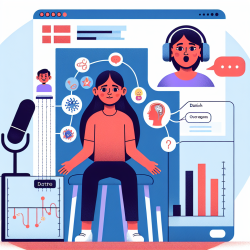Introduction
In the ever-evolving landscape of education, the integration of neuroscience into educational practice holds tremendous potential. However, the gap between these two fields remains a significant challenge. The research article "Why Educational Neuroscience Needs Educational and School Psychology to Effectively Translate Neuroscience to Educational Practice" sheds light on how school psychologists can play a pivotal role in bridging this gap. By leveraging their unique skill set, school psychologists can help translate complex neuroscientific findings into practical educational strategies, ultimately improving student outcomes.
The Role of School Psychologists
School psychologists possess a unique blend of knowledge in both neuroscience and educational practice. This positions them as vital agents of change in translating research into actionable strategies. The National Association of School Psychologists (NASP) Domains of Practice highlights several areas where school psychology can actively support the integration of neuroscience into education:
- Data-Based Decision-Making: School psychologists are trained to evaluate research and implement evidence-based practices, ensuring that educational strategies are grounded in scientific evidence.
- Academic Interventions: By understanding the neural underpinnings of learning difficulties, school psychologists can develop targeted interventions that address specific challenges faced by students.
- School-Wide Practices: School psychologists can promote school-wide initiatives that incorporate principles of effective learning, such as practice testing and spaced learning, to enhance student outcomes.
Overcoming Barriers
Despite the potential benefits, several barriers hinder the effective translation of neuroscience into educational practice. These include differences in goals and methodologies between the fields, as well as practical challenges such as limited resources and support. School psychologists can help overcome these barriers by serving as intermediaries between researchers and educators, facilitating collaboration and communication.
Moving Forward: A Collaborative Approach
To effectively bridge the gap between neuroscience and education, a collaborative approach is essential. Schools can adopt a research school model, similar to teaching hospitals, where school personnel actively engage in research to build a real-world evidence base for practice. Collaborations between academic school psychology and educational neuroscience programs can also foster the development of research agendas that address practical educational challenges.
Conclusion
The integration of neuroscience into educational practice holds great promise for improving student outcomes. By leveraging the expertise of school psychologists, educators can make data-driven decisions that are informed by the latest neuroscientific research. This collaborative approach has the potential to transform educational practices and create better outcomes for children.
To read the original research paper, please follow this link: Why Educational Neuroscience Needs Educational and School Psychology to Effectively Translate Neuroscience to Educational Practice.










